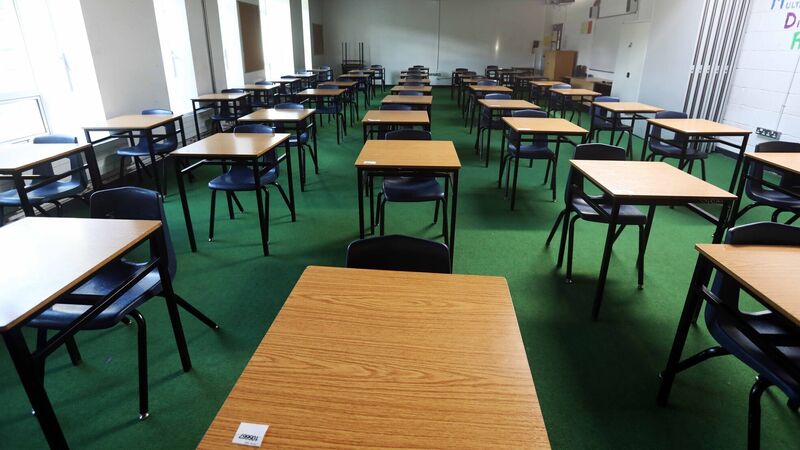Vast majority of Leaving Cert calculated grades 'unchanged' by Department of Education

Almost eight out of ten school-estimated grades, the grade arrived at by students’ teachers and signed off on by principals, remained 'unchanged'. Picture: Leah Farrell/RollingNews.ie
The vast majority of the Leaving Cert grades calculated by schools remained the same following the Department of Education’s standardisation process, and a school’s academic track record will not play a role in deciding grades.
Almost eight out of ten (79.2%) school-estimated grades, the grade arrived at by students’ teachers and signed off on by principals, remained “unchanged” following the standardisation process, it has been confirmed this Tuesday.
This equates to 323,000 of the 410,000 Leaving Cert calculated grades to be issued to students this year.
With students set to receive their results next Monday, September 7, the department has confirmed that more than 83% of grades it received from schools have remained at or above the schools’ estimated grades.
The use of historic school-by-school data, the so-called ‘school profiling’ element which included schools’ performance in exams, has also been removed from the equation following Cabinet sign off this Tuesday.
This was by far the most contentious and criticised element of the calculated grades process.
As the original Government decision on May 8 stipulated the use of four sources of data to be used, approval from the Cabinet was necessary to remove this from the standardisation process.
While data processing has not yet been completed, the current trends indicate:
- Just under 4% (16,000) of grades were increased by standardisation.
- Just under 17% (63,000) grades were reduced by one grade due to standardisation.
- Just 0.1% of all calculated grades were reduced by two or more grades.
Crucially, the Department of Education is confident that the process does not show any negative effects against disadvantaged schools.
More than 81% of grades remained unchanged in Deis schools, compared to 79.4% in non-Deis schools, and 5% of grades increased in Deis schools, compared to 3.7% in non-Deis schools.
A further 13.6% of grades were reduced in Deis schools, compared to 16.8% in non-Deis schools.
The department is also confident that exceptional students will have their results preserved as part of the process.
Figures are not yet available for Leaving Cert Applied calculated grades.
The Calculated Grades Executive Office in the Department of Education is looking at any grades that were reduced by two or more grades to make sure they are statistically sound.
Leaving Cert results this year are expected to be stronger, with this expected to fluctuate between subjects.
Read More
The statistical model applied to calculated grades is a “blind” model and does not take into account characteristics such as gender or disadvantage.
However, the Calculated Grades Executive Office has checked the effects and outcomes of the model on these groups as part of the validation process to make sure there are no anomalies.
The department maintains that the standardisation has been necessary, as different schools took different approaches to estimating marks and students rank orders.
The percentage of grade 1s at Higher Level estimated by teachers more than doubled in many subjects, and tripled in some.
Such uncontrolled jumps in marks would mean CAO points would rise very significantly.
Likewise, some teachers and schools also underestimated students’ grades.
However, lessons have been learnt from the UK, where this year’s A-level results were engulfed in controversy following revelations that disadvantaged students were more likely to have their grades lowered by an algorithm.
Rectifying issues after students received their results has had knock-on effects for the UK higher education system and has proven very stressful for students.
Here, plans are also underway to create more than 1,250 additional places in higher and further education, which will be supplemented by more than 1,410 additional places in ‘key skill’ areas including science, engineering, ICT and professional construction.
Approximately 340 of these additional places will be focused on high-demand courses across universities and institutes of technologies.
These places will help to manage demand across the CAO system, according to the Department of Education.
Students will receive their results on Monday September 7, and round one CAO offers will be issued on Friday, September 11.
On Monday September 14, the appeals process opens for students and at that time, students’ may access their school’s estimated marks and ranking, as well as their calculated grades from the executive office.





